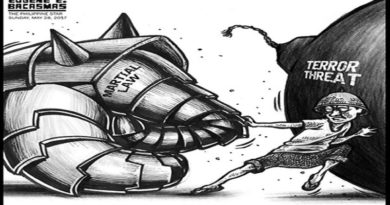EDITORIAL-SG: The Straits Times says- Making headway with an invisible enemy
.The Straits Times

It is reassuring that the circuit breaker measures show some signs of working. But experts say the situation could be better. That would involve plugging what remains a worrying gap of a spread within the community, either among people who are supposed to be home but who go out without taking necessary precautions, or even among some essential services and workers who remain exposed to getting infected. The authorities have sought to address that by tightening circuit breaker measures and narrowing the definition of essential services that can operate.


Given the economic and social costs being exacted by the circuit breaker, Singaporeans long for a return to normalcy. However, the real issue is not the duration of the measures but the behavioural changes needed to ensure that a return to business as usual does not translate to the return of the virus and a renewed spread. The onus lies on every citizen and resident to make sure that the circuit breaker works well enough to make it as short-lived as possible. The Government has appealed especially to seniors to stay home because they are a group considered most vulnerable to the coronavirus. Their chances of infection are higher than those of others. If infected, the spread to family and friends, in care facilities for example, would present a severe setback to all that is already being done.
They are not the only possible weak link. It has been calculated that at least 350,000 workers still commute daily even after the reduction of essential services. No one would deny the critical importance of healthcare workers, for example, being allowed to function. They constitute the front line of Singapore’s war on the virus. But individuals in other areas still at work – food and beverage, delivery riders, safe-distancing ambassadors, among others – must be mindful too, and have a care. Their well-being, and that of their families, depends on their actions and those of others in the larger ecosystem. Employers too must remember that workers’ freedom of movement must be accompanied by an equal degree of responsibility.


Even amid tighter measures, the risk of the virus spreading and new clusters forming remains. Experts point to crowded areas, places with high human traffic, and those who live in a semi-closed community as being vulnerable. Domestic helpers, prison inmates and communities on board ships are all potential targets of the spread. Singapore’s experience in handling the 2003 severe acute respiratory syndrome and 2009 H1N1 outbreaks would come in useful here. Then, as now, the country faced an invisible enemy. What was needed was to make it visible psychologically to the population even as medicine and science fought it. Today’s unprecedented measures are a stark reminder that while unseen, the threat remains very real.












